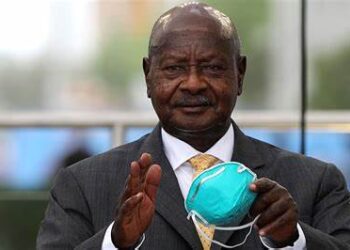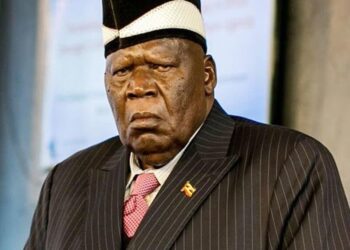By THE INDEPENDENT UG
Kampala, Uganda | THE INDEPENDENT | Amidst global calls for governments to increase funding for climate activities, Uganda is torn between allocating more of its resources to this cause and keeping national debt levels in check.
According to Uganda’s Nationally Determined Contributions, as updated in fulfillment of Article 4 of the Paris Agreement on Climate, the country set a carbon emission reduction target of 24.7 percent below Business As Usual by 2030.
This and other targets require at least $28.1 billion (109 trillion shillings) between 2022 and 2030, with the country committing to mobilize domestic resources to cover unconditional actions to the tune of $4.1 billion (16 trillion shillings), equivalent to 15 percent of the total cost.
Yet, most of this money is supposed to come from debt, exacerbating the already worrying situation, according to SEATINI Uganda Executive Director, Jane Nalunga.
Uganda’s debt has hovered around 50 percent of GDP for the last three years, according to government figures, with warnings that further increase above that mark would pose risks for the country.
In order to ensure the government continues to offer its services, Nalunga says debt cannot be entirely avoided, but the situation needs balancing.
She adds that the global discussions, under which the developed world promised to raise up to $100 billion per year for climate mitigation activities in poor countries, may not be relied upon as it is taking too long to materialize, hence the need for the country to increase funding from its domestic resources.
Dr. Sam Mugume, the Assistant Commissioner of the Macroeconomics Policy Department at the Ministry of Finance, Planning, and Economic Development, acknowledges the ministry’s awareness of the dilemma, but states that they must consider the costs.
Mugume emphasizes that if resources are not invested in climate mitigation programs, the country risks greater losses in terms of both the economy and environmental degradation.
He cites the example of the 2016 drought that primarily affected the cattle corridor, resulting in a 50 percent decline in economic growth. Hence, there’s a need to strike a balance when budgeting.
However, Mugume states that they endeavor to balance by allocating resources to activities with broader impacts, such as smart agriculture, solar irrigation, and other long-term projects.
He made these remarks at a dialogue on “Leveraging Taxation as a Sustainable Tool for Climate Financing in Uganda: The Nexus Between Climate Change and Fiscal Policy,” a collaboration between the Ministry of Finance and SEATINI Uganda.
Ramathan Ggoobi, the Permanent Secretary and Secretary to the Treasury, asserts that the country will continue making adjustments in its tax policies and budgetary allocations to ensure that more activities align with climate mitigation efforts.
In a statement delivered by Dr. Mugume, Ggoobi mentions that policies like carbon pricing will contribute to realizing the $4.1 billion commitment that the government has made, as it aims to reduce the impacts of climate change.
Eron Werikhe, the Senior Climate Finance Officer at the Ministry, underscores the risk that the country faces from underfunding climate mitigation programs. He notes that the economy heavily depends on agriculture, which in turn relies on rainfall.
This dependence means that any adverse changes in the weather have negative effects on the sector and, consequently, the economy.
Unfortunately, Werikhe adds, many of the poorer individuals and those slightly above the poverty line rely on agriculture for their livelihoods. Therefore, any shocks may lead to a significant increase in poverty levels.
******
URN







Discussion about this post